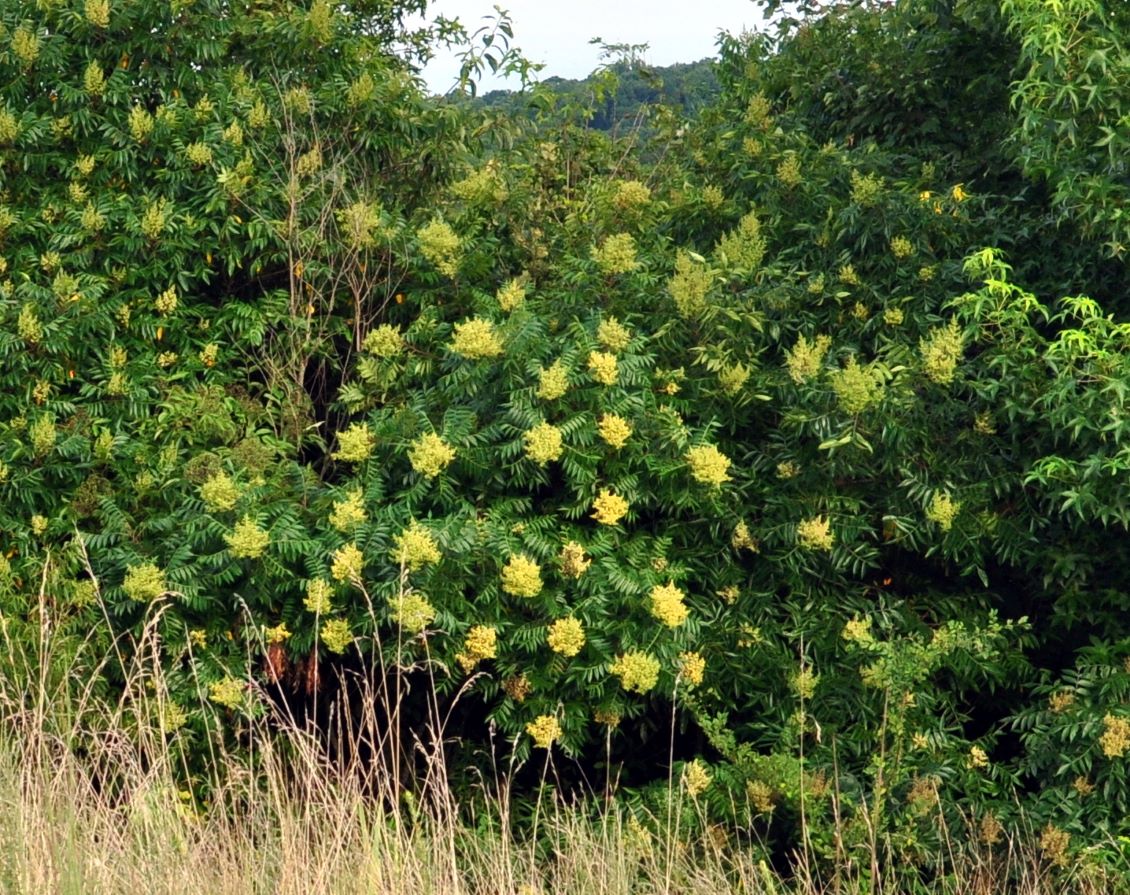
Red-berried Sumac Includes Three Species: Winged, Smooth and Staghorn
UT Gardens’ November Plant of the Month
Submitted by Carol Reese, retired UT Extension horticulture specialist
Sumac! Their eyes are wide that I would recommend it for any landscape! This reaction is not uncommon because of the black sheep in the family. Poison sumac is indeed a devil you don’t want to encounter, but I can almost guarantee you that you won’t. Poison sumac is rare in the wild and would require you to don some serious waders and seek the few locations it has been recorded in our swamps.
Spears of red berries are your sign. Poison sumac, also known as swamp sumac, has white berries and will never be seen in the places you find the drought tolerant red-berried species of sumac that cheerfully thrive on our state’s sunblasted unirrigated roadsides.
The red berried spears salute the female colonies of sumac, and their deliciously lemony tartness is relished by birds and recorded to be a primary source of winter food for our beloved Eastern bluebird, according to research by West Tennessee ornithologist David Pitts, a retired UT Martin professor. I frequently suck on the tart berries myself as I wander my property and was surprised when I noticed that some clumps of sumac had better flavor than others, just as you will frequently find that better blackberry patch in the wild. I’ve also experimented with using them in recipes found online, both sweet and savory.
At first, I had to pay close attention to tell apart the three most dominant species in this region. Eventually the differences become evident even at a distance, at least to differentiate winged sumac (Rhus copallinum) from smooth (Rhus glabra) and staghorn (Rhus typhina) sumacs. Staghorn and smooth look much alike until you get close enough to see or stroke the velvet (like a buck’s emerging antlers “staghorns”) as opposed to smooth’s stems. Winged is also called shining sumac, so if you are not close enough to look for the winged midrib on the compound leaves, you will learn to notice its glossy leaf surfaces flashing their identity messages. It’s also a more sprightly upright leaf with a stiffer habit that throw themselves against the sky, while smooth’s matte textures and softly drooping leaves are more relaxed. These soft leaves have an underside very nearly white that sway and flutter more as you whoosh past in a vehicle, sometimes throwing themselves up to toss their “white petticoats.”
Sumac is gaining acceptance in the landscape realms, especially the irresistible form ‘Tiger Eyes.’ Dissected forms have been around for decades, but ‘Tiger Eyes’ foliage was both dissected and the color of a ripe lemon. It’s been reported to be a bit difficult to get established, but I suspect that’s because most gardeners overestimate how much to water it. Remember, it’s a sumac. They thrive in hot and dry sites, which may become the major criteria for selecting low maintenance plants if our summers become more torturous.
The University of Tennessee Institute of Agriculture is comprised of the Herbert College of Agriculture, UT College of Veterinary Medicine, UT AgResearch and UT Extension. Through its land-grant mission of teaching, research and outreach, the Institute touches lives and provides Real. Life. Solutions. to Tennesseans and beyond. utia.tennessee.edu.